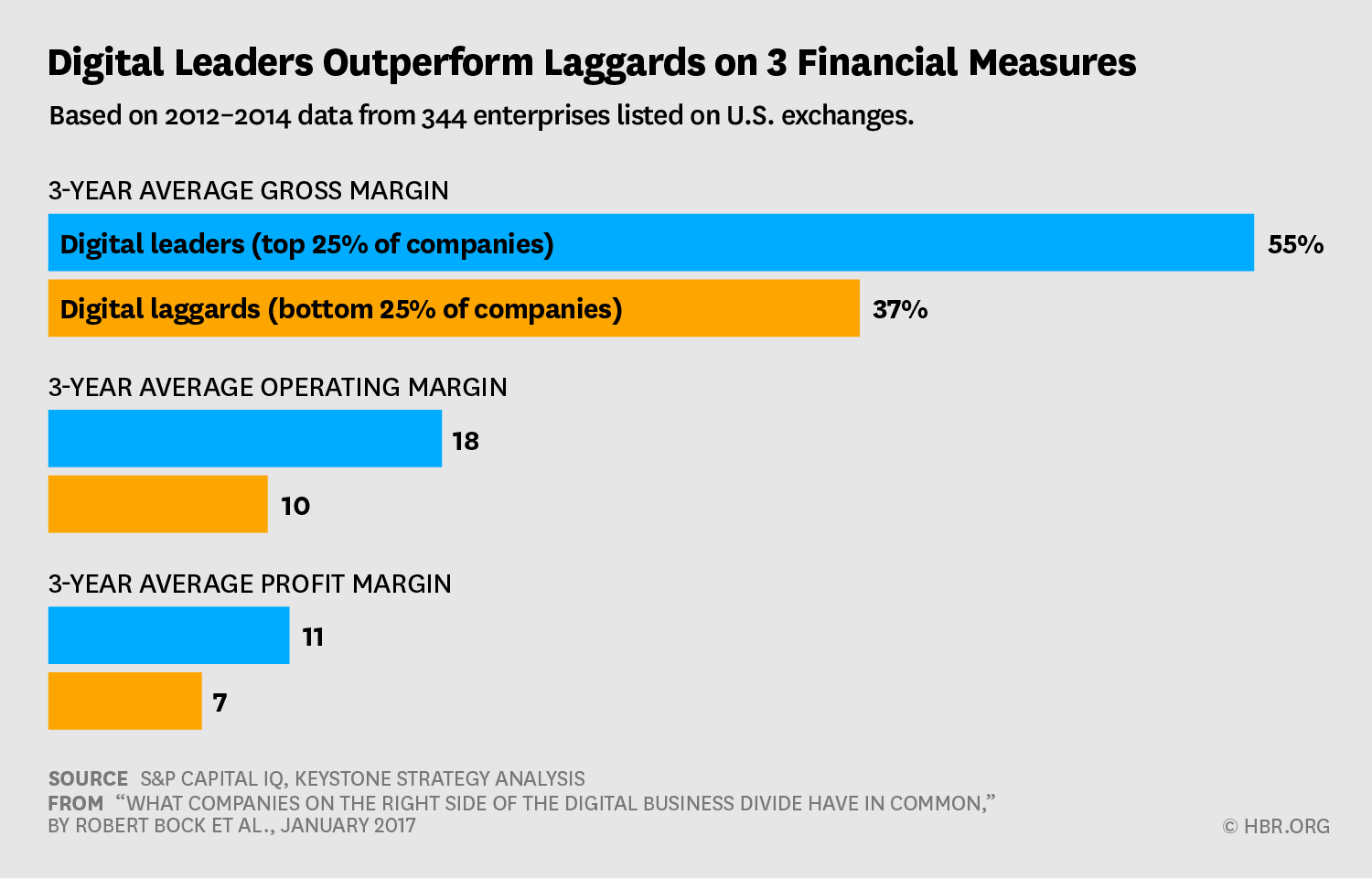Common traits in digital-leading companies
Harvard Business Review has published an excellent article on what the companies on the right side of the digital business divide have in common (authors Robert Bock, Marco Iansiti, and Karim R. Lakhani). Here are my takeaways:
Digital transformation pays off
Examining 344 enterprises in 2012-2014 listed on U.S. exchanges, the researchers noted marked differences between digitally transformed organizations (“digital leaders”) and those whom lagged behind (“digital laggards”). The leaders had a different approach to opportunity, strategic mindset, and operating model.
How leaders differ
Data and analytics is at its core. Leading organizations are strategic in their data acquisition, aggregation, and retrieval compared to their competitors. Business users have the ability to access consistent, virtually real-time data for deepened learning, decision-making, and predictive modeling.
Financially, the research has showed huge gains in digital leaders across gross margin, operating margin, and profit margin.
A data-first operating model
Digital leaders deliver tailored customer experiences and limit customer churn by leveraging real-time data and analytics.
In manufacturing, they optimize production runs based on demand forecast, predict equipment downtime using advanced analytics, use predictive modeling to anticipate customer support requests.
In product development, digital leaders utilize data to inform product design, monitor products remotely and drive customer support, and benchmark customers and advise them on how to realize greater value.
To aid in employee growth opportunities, digital leaders collect data on employee performance and generate recommendations for development, empower employees with access to self-service business intelligence and data visualization tools, and allow employees to define and receive real-time alerts to more effectively manage changes to the business.
Integrating the old with the new
The authors of the research are clear that a digital transformation does not suggest out with the old and in with the new, but modifying the existing structure with digital operating principles and integrating current assets and knowledge to address new challenges and opportunities.
To do this well, leading companies invest not only in technology but also in developing the data-centric and network-centric capabilities and mindset to put that technology to the best use.
*The authors have consulted for a number of companies in the software industry, included several mentioned in this paper. The research was performed in collaboration with Keystone Strategy LLC, which received funding from Microsoft Corporation.

